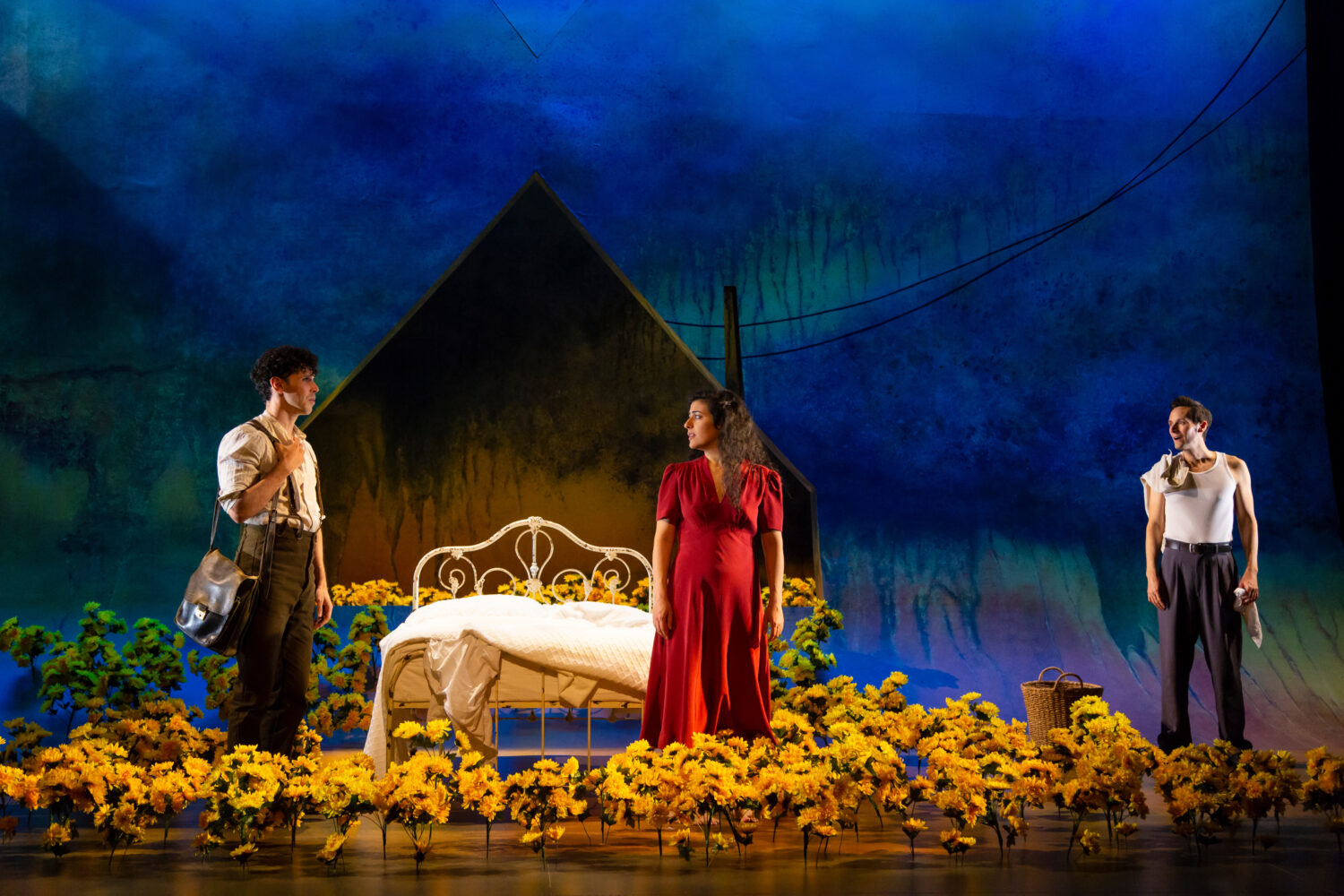In a new translation/adaptation by Huntington Playwright-in-Residence Melinda Lopez, Yerma, written by Spanish playwright Federico Garcia Lorca in 1934, is a cautionary tale about the effects of obsession and the harm of traditional gender roles. Yerma is now playing through June 30th at the Boston Center for the Arts and is produced by the Huntington Theatre.
The titular character is newly married and excited to fulfill her ultimate duty as a woman by having children with her husband, Juan. However, despite a few false hopes, Yerma just cannot get pregnant, and her excitement turns to preoccupation and ultimately obsession as she considers options ranging from having an extramarital affair to seeking out witchcraft to aid in conception. As the play progresses in provincial Andalusian Spain, her desperation becomes more focused as she questions her own identity and worth as a childless woman, not being able to accept that she will never bear her own children.

Yerma. Photo Credit: T. Charles Erickson
Nadine Malouf plays this progression as Yerma with slowly increasing tension. Both opening and closing scenes occur in her marital bed with her husband, played by Christian Barillas, but it’s not until this dramaturgical echoing in which I understood how much Yerma had changed throughout this short hour and a half long play. While Barillas and Ernie Pruneda play Yerma’s husband and childhood friend/potential lover with grace, the supporting cast of five women interact with Yerma in the more interesting and nuanced ways. This chorus (Marianna Bassham, Alma Cuervo, Evelyn Howe, Alexandra Illescas, and writer Melinda Lopez herself) primarily acts as five mothers and/or soon-to-be mothers, giving Yerma advice, support, and vocal accompaniment during the several traditional Flamenco songs played slightly off stage by Juanito Pascual and Fabio Pirozzolo. These interactions, both as individuals and as a group, offer new insight into what defines womanhood and provides opportunities for visual and auditory beauty.

Yerma. Photo Credit: T. Charles Erickson
Federico Garcia Lorca, who is best known for his play Blood Wedding, writes a complex play in which many of his characters are meant as symbols. Lopez and director Melia Bensussen modernize the play by humanizing the characters, giving them names and backstories, and adopting a slightly naturalistic approach while still maintaining its symbolic roots. While the push toward a modern sensibility makes sense for a 2019 audience, it also occasionally clashes with Lorca’s play. Barillas plays husband Raul fairly naturalistically, but his sisters are obvious symbols; with their funeral black, slow movements, and silences they represent infertility. Barillas’ realism pushes against the symbolic and creates an unbelievably paranoid husband. I understand that contemporary audiences may not be used to a symbolist drama, but I believe that committing to this medium from the beginning may have alleviated some of this dramatic ‘confusion.’
With this said, the play shines when it does commit to symbolism. The stage is beautifully filled with yellow flowers that are slowly picked dry by the end. The backdrop of the play is a cutout of a chimneyed home; later another cutout is lifted above revealing an upside down home. The sisters-in-law are wonderfully creepy. The petals slowly falling from the sky as Yerma laments and speaks are a wonderful theatrical moment. Brian J. Linnenthal’s lighting design is also particularly effective in enhancing the symbolism as he projects various colored light sources across the stage depending on the mood of the scene.
Yerma is a gem of a play; there are not too many theaters in Boston doing this kind of drama. Melinda Lopez, Melia Bensussen, and Nadine Malouf all bring a keen and artistically talented sensibility to this complex show while focusing on the idea of womanhood to its razor’s edge.
This post was written by the author in their personal capacity.The opinions expressed in this article are the author’s own and do not reflect the view of The Theatre Times, their staff or collaborators.
This post was written by Rem Myers.
The views expressed here belong to the author and do not necessarily reflect our views and opinions.

















